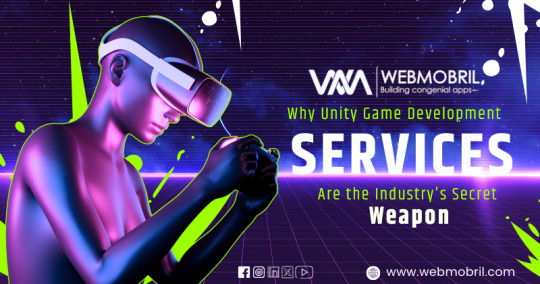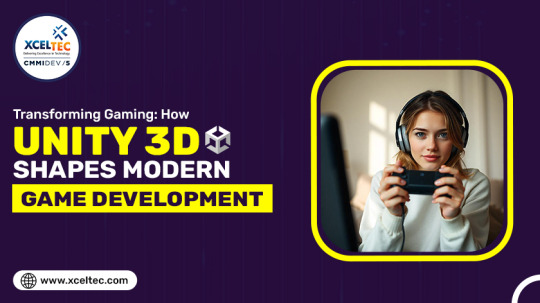#cross platform game development
Explore tagged Tumblr posts
Note
From past responses you clearly have some experience with the console cert process. I was wondering: why do so few games offer cross platform play? Does the cert process become disproportionately more difficult when communicating to other systems becomes involved? Or is it just a difficult feature from a purely engineering pov? Thank you!
There are two major groups of hurdles to crossplay - technical and political. Both of these issues were primarily ironed out by Epic in late 2018, and then they opened up the doors for everybody else by releasing their set of crossplay tools and tech to the public for free.

On the technical side, the various walled garden networks - PSN, XBL, Nintendo Online - each have their own set of protocols, ports, technology, etc. They do not talk to each other or transfer information in the same way. There's a good reason for this - they weren't built by the same people or using the same technology, so their internal workings are all different. In order to solve this, the any third party developer needs to build a system that can take data from any supported service and translate it in real time so all players on other platforms understand what's happening in the game. This requires a fairly hefty engineering effort.

On the political side, console platform networks are walled gardens that generate a lot of revenue for the platforms. Every sale within that walled garden typically earns the platform owner a 30% cut. This is why they can afford to sell game consoles at a loss, they hope to make it back from their users. Allowing other players on other platforms to play with their users takes away from their exclusivity. This attitude permeates their certification rules, which are then enforced on all third party developers. Even now that crossplay is allowed, there are a lot of rules in place about things like communication between platforms (e.g. Rocket League was not allowed to let Playstation players communicate with PC players because of potential content ratings).

In 2018, Epic pushed to allow crossplay for their lifestyle game juggernaut Fortnite. Microsoft had already been dabbling in that arena by allowing Xbox to play with PC players (since most players ran on Windows anyway, so they were both Microsoft platforms), but Sony refused. Epic smoothed this over by paying Sony a significant sum of money to 'make up for lost revenue' and developing their own tools and technology to handle the technical issues of allowing crossplay. Sony begrudgingly agreed, so Fortnite went crossplay. Then, in typical fashion, Epic released their entire suite of crossplay tools to the public for free. Games like Dauntless and Rocket League soon followed to crossplay, and by 2019 Sony had changed their stance to accept crossplay.
[Join us on Discord] and/or [Support us on Patreon]
Got a burning question you want answered?
Short questions: Ask a Game Dev on Twitter
Long questions: Ask a Game Dev on Tumblr
Frequent Questions: The FAQ
77 notes
·
View notes
Text
shameless self promotion sunday
tagged by @foxboyclit and @thegreatobsesso, thank you both!
i love all my fics but also i do in fact do other things sometimes, and i’m really quite proud of my little neocities site. it’s not perfect, and it’s very much a work in progress, but the parts that are done I really like!
i have all my fic up on there, and a load of my playlists (with meta commentary on some!), plus I made sections for Obedience and obsession that have some very neat looking character pages...i love tinkering with html and css, and i love having a project that is purely for fun and not remotely about demonstrating any kind of skill.
i've really enjoyed solving such puzzles as 'how to make a horizontal menu bar' and 'how to make a reactive image grid'



anyway i just like my lil hand-coded stick-figure of a website, and if anyone else has a neocities let me know, i wanna put you in my list of friend links~
no-pressure tagging @oh-no-another-idea @chauceryfairytales @reneesbooks and @talesfromaurea to do some shameless self promotion (on a sunday or any other day, all days are good for singing your own praises)
#writeblr#tag games#neocities#id in alt#id in alt text#self promotion sunday#shameless self promo#it is not the most accessible or cross platform site but i did make it myself and i am Not a wbe developer#by any stretch#i just like doing it! it's fun!#plus it's my backup place for fics#and a place if people don't want to use ao3 or dreamwidth#i also really like that i have a place for my playlists now#cause i love making covers and writing track commentary#listen to my yap about my music choices for my blorbos!!!
15 notes
·
View notes
Text
#GTA:MagicKingdomDisney






Game Development Overview:
Title: GTA: The Magic Kingdom Platform: PlayStation 7 Developer: Rockstar Games in collaboration with DearDearestBrands Genre: Open-world Action/Adventure
Storyline:
In GTA: The Magic Kingdom, players explore a dark, reimagined version of Disney's iconic Magic Kingdom. The world is divided into themed lands, each with its own rules and factions. At its core, the story follows a criminal protagonist who is embroiled in a high-stakes battle for power and survival within the kingdom's chaotic, secretive underworld.
The protagonist (you) is a mysterious figure drawn into the Magic Kingdom's politics, where a sinister force is using the enchantment of Disney’s original lands for darker purposes. The hunt for Bambi, who is rumored to possess extraordinary powers tied to the kingdom’s survival, becomes a central pursuit, while the player navigates treacherous alliances, heists, and confrontations.
Main Character:

Name: Maximus Dark (or choose your own name) Backstory: A former magic thief, Maximus was exiled from the underworld for crossing a powerful figure. Now, forced to work in the Magic Kingdom's black market, he must hunt down Bambi and unlock secrets from deep within the kingdom's enchanted areas. Maximus has a personal vendetta against the kingdom’s rulers, who wronged him in his past. Throughout the game, the player will uncover the protagonist’s lost memories and long-forgotten connection to the forest kingdom that Bambi hails from.
Motivation: Maximus's primary goal is to reclaim his lost power, discover the truth behind Bambi’s existence, and stop a powerful corporation that seeks to rewrite the very essence of the Magic Kingdom. As the story unfolds, Maximus will face moral dilemmas, where every choice shapes the fate of the kingdom and his own soul.
Supporting Characters:

Bambi - The elusive and powerful figure whose very presence is tied to the survival of the kingdom. Bambi is the key to restoring balance but is hunted by those who wish to harness their power for dark purposes. They are often seen as a mystical being, guiding the protagonist toward their true destiny.
Claire Jorif Valentine – An enigmatic leader of a rebel faction, Claire operates in the shadows, challenging the corrupt rulers of the kingdom. She provides Maximus with missions, allies, and sometimes betrays him to further her hidden agenda. A powerful figure in the underworld, she seems to know more about Bambi than she lets on.
The Enchanted Guardians – These figures protect each themed land within the Magic Kingdom. They could either be allies or enemies depending on how the player approaches them. The Guardians are immortal beings who represent the natural forces of the kingdom—ranging from corrupted versions of iconic Disney characters like Captain Hook, Maleficent, or the Queen of Hearts.
Tiger Lily – A key ally who once helped Bambi and holds secrets to unlocking the magical energies in the kingdom. She is on a quest to stop the dark forces from taking over the kingdom. As a supporting character, she aids in quests related to nature and magic and can unlock special abilities for the player.
Walt - A mysterious figure who seems to control the Magic Kingdom’s darkest secrets. He appears to have been a creator of both the magic and the corruption that now threatens the lands. Maximus will need to confront him as the story builds toward the final confrontation.
Gameplay:
Open-World Exploration: The game world is split into different magical lands, such as Adventureland, Fantasyland, Tomorrowland, and others. Each land offers unique challenges, missions, and enemies. Players can freely explore these areas and engage in side missions while unraveling the main story.
Combat: Players can engage in both ranged and hand-to-hand combat, using magical powers, enchanted weapons, and advanced technology. The combat system is dynamic, blending traditional open-world combat with the ability to wield magic and technology.
Heist Missions: As Maximus tries to gain control of the Magic Kingdom, he must undertake heists to infiltrate high-security areas and steal vital items—such as keys to unlock magical areas or magical artifacts that help in the hunt for Bambi.
Choices & Morality: The game emphasizes player choices, with the narrative changing based on decisions. Will Maximus become a hero, villain, or something in-between? The relationship with Bambi and other characters is crucial, as decisions affect both alliances and the kingdom’s fate.
Stealth and Deception: Players can also use stealth to infiltrate the kingdom’s high-security areas or employ deception to manipulate enemies. Using disguises, magic, and technology, Maximus can change the course of battles or avoid them altogether.
Motivation of Player:
The player is constantly driven by the need for power, knowledge, and redemption. They must build their empire, uncover the dark secrets of the kingdom, and forge relationships with various characters—each with their own agendas. However, the hunt for Bambi represents more than just a physical chase; it's a quest for deeper understanding, as Bambi’s powers could either save or doom the Magic Kingdom.
Key Objectives:
Locate Bambi: The primary objective is to find Bambi before the forces of darkness do. Along the way, players uncover the mysteries of the forest kingdom and its connection to the greater magical world.
Restore the Kingdom: Players must gather allies, defeat corrupt leaders, and unlock ancient powers to restore balance to the kingdom. Each land requires the completion of key quests, often involving battles, negotiations, and solving puzzles.
Uncover Maximus’s Past: As Maximus’s memories return, the player will unlock hidden abilities and unique storylines. The past is filled with betrayal and secrets that will help guide the future of the kingdom.
End the Corruption: Maximus must dismantle the oppressive corporation that seeks to control the kingdom's magical energy. This requires sabotaging their operations, stealing key documents, and confronting their leaders in epic battles.
The Final Confrontation: In the game's climax, the player must decide whether to join Bambi in their fight for freedom or betray them to seize ultimate power. The fate of the Magic Kingdom—and possibly the world—rests in the player’s hands.
This game blends classic open-world gameplay with dark fantasy elements and a rich narrative, providing players with the chance to explore a re-imagined Disney universe full of intrigue, magic, and moral complexity. The pursuit of Bambi adds layers of mystery and suspense, making this a truly unique entry in the GTA franchise.








To project the potential success of GTA: The Magic Kingdom in 2025, we need to consider various factors including market trends, audience engagement, and the unique elements of the game. Here's a breakdown:
Market Growth for Open-World and Action-Adventure Games:
Current Trends: The gaming industry, especially for open-world games and action-adventure genres, has shown steady growth. Titles like Grand Theft Auto V, The Witcher 3, and Cyberpunk 2077 continue to drive demand for expansive worlds with immersive stories.
Projections: The global gaming market is expected to grow at a compound annual growth rate (CAGR) of around 9.5% from 2024 to 2028. As GTA: The Magic Kingdom combines elements of beloved franchises (GTA and Disney), it could tap into both established fanbases, providing a unique mix of nostalgia and innovation.
Audience Engagement and Sentiment:
Nostalgia Factor: The reimagining of Disney’s Magic Kingdom with dark and mature themes will likely engage both nostalgic fans of Disney and mature audiences looking for an alternative take on Disney. This could boost both initial sales and long-term engagement.
Fanbase Growth: By 2025, your fanbase could grow significantly as the game's story unfolds. Assuming solid marketing campaigns and collaborations with influencers or streamers, you might see a steady increase in followers and engagement leading up to and after the game’s release.
Projections: Positive sentiment is expected if the game's unique blending of fantasy, technology, and dystopian elements resonates with audiences. Projections for engagement could range from a 15-20% increase in social media mentions in the first year after release.
Technological Advances and Game Development:
PlayStation 7 and Future Hardware: Given the expected launch of PlayStation 7 around 2025, GTA: The Magic Kingdom could be designed to take full advantage of next-gen console power. This will allow for an even more immersive experience with advanced graphics, smoother gameplay, and expansive worlds.
Projections: With the integration of next-gen technologies (such as AI-driven NPCs and advanced virtual reality options), GTA: The Magic Kingdom could have a 30-40% higher player retention rate due to these enhanced features.
Sales Projections:
Market Demand: Based on trends for similar games (open-world, fantasy, and action-adventure), initial sales could range between 5-10 million copies within the first year.
Projections for 2025: The game could potentially reach 15-20 million copies sold by 2025, depending on post-launch expansions, updates, and downloadable content (DLC). A strong, loyal fanbase built from the early adoption of the game could help push this figure higher.
Expansion and Future Growth:
DLCs & Expansions: By 2025, the game could see its first major expansion, adding new zones, characters, and stories to keep players engaged.
Projections: Expansions or sequels could drive continued engagement. This could result in an additional 10-20% increase in sales in the second year post-launch, especially if the game incorporates user feedback and evolves based on community input.
Marketing and Brand Partnerships:
Brand Alignment: With ties to Disney, GTA: The Magic Kingdom could attract partnerships, cross-promotions, and collaborations with major brands.
Projections: These collaborations could increase visibility, leading to higher-than-expected sales and engagement. With a proper marketing push and potentially viral content, the game's overall reach could expand significantly, especially if there are partnerships with influencers or Disney-themed events.
Summary of Projections for 2025:
Sales: 15-20 million copies sold globally
Player Engagement: 30-40% higher retention with the introduction of new technology
Audience Growth: Significant increase in fanbase with positive sentiment and engagement, likely 20-25% growth year-over-year
Brand Partnerships and DLCs: Increased revenue from post-launch content and collaborations
Overall, with the unique blend of popular genres and the anticipated growth of gaming markets, GTA: The Magic Kingdom could be positioned for strong performance by 2025, with significant growth in both sales and player engagement.
#Game Development Overview:#Title: GTA: The Magic Kingdom#Platform: PlayStation 7#Developer: Rockstar Games in collaboration with DearDearestBrands#Genre: Open-world Action/Adventure#---#Storyline:#In GTA: The Magic Kingdom#players explore a dark#reimagined version of Disney's iconic Magic Kingdom. The world is divided into themed lands#each with its own rules and factions. At its core#the story follows a criminal protagonist who is embroiled in a high-stakes battle for power and survival within the kingdom's chaotic#secretive underworld.#The protagonist (you) is a mysterious figure drawn into the Magic Kingdom's politics#where a sinister force is using the enchantment of Disney’s original lands for darker purposes. The hunt for Bambi#who is rumored to possess extraordinary powers tied to the kingdom’s survival#becomes a central pursuit#while the player navigates treacherous alliances#heists#and confrontations.#Main Character:#Name: Maximus Dark (or choose your own name)#Backstory: A former magic thief#Maximus was exiled from the underworld for crossing a powerful figure. Now#forced to work in the Magic Kingdom's black market#he must hunt down Bambi and unlock secrets from deep within the kingdom's enchanted areas. Maximus has a personal vendetta against the king#who wronged him in his past. Throughout the game#the player will uncover the protagonist’s lost memories and long-forgotten connection to the forest kingdom that Bambi hails from.#Motivation: Maximus's primary goal is to reclaim his lost power#discover the truth behind Bambi’s existence
10 notes
·
View notes
Text
saw the FBC firebreak game will be available on ps plus and steam, maybe I WILL play it
#didn’t pay attention to its platforms before but I could get my sibling to get it on steam !!#ill still wait for reviews but maybe this is the time to try getting more into co-op games#but if there’s a cheap or free ps plus deal im ABSOLUTELY giving it a go (…I’d be using someone else’s ps+ lol so fingers crossed)#even if I don’t end up liking it—hope it does well bc these developers deserve it#to delete
3 notes
·
View notes
Text
Unlocking Success With Android App & Game Development Company

In today’s mobile-first world, having a powerful Android presence is crucial for business success. Whether you’re looking to build a business app, a mobile game, or an enterprise-grade solution, choosing the right development partner is key.
That’s where XcelTec, a leading Android app development company, comes in—delivering smart, scalable, and innovative Android application development and Android game development solutions tailored to your business needs.
Why Android Is the Right Platform
With over 3 billion active devices, Android is the most widely used mobile operating system globally. Here’s why businesses are investing heavily in Android app development:
Global Market Reach
Customizable & Open-Source
Cost-Effective Development
Faster Deployment
Google Play Store Accessibility
The open-source nature of Android allows greater flexibility and innovation — something XcelTec leverages fully for each client project.
Experts in Android Application Development
XcelTec offers full-cycle Android application development, from concept to deployment and maintenance. Our developers are skilled in building apps for:
Startups & Entrepreneurs
Enterprises & Government Projects
E-Commerce & Retail
Healthcare & EdTech
On-demand & Service Platforms
Our Core Android Development Services:
Custom App Development: Tailored Android apps with native Android app development performance
UI/UX design: User-centric interfaces with intuitive navigation
Testing & QA: Device compatibility, performance, and security testing
Cloud integration: Seamless backend infrastructure for scale
Maintenance & Support: Post-launch updates and optimizations
Expertise in Android Game Development
The mobile game development industry is booming — and Android game development leads the charge. XcelTec offers end-to-end game development services, using top engines like Unity and Unreal.
Game Development Highlights:
2D & 3D Game Design
Multiplayer & AR/VR Integration
In-app Purchases & Game monetization
Gamification & User Engagement
Analytics & Performance Tracking
Whether you’re building casual games, educational apps, or immersive experiences, XcelTec ensures your game performs seamlessly across Android devices.
Technologies We Use
XcelTec utilizes the latest tools and frameworks in Android development:
Languages: Kotlin, Java
Frameworks: Jetpack, Flutter (for cross-platform development)
Game Engines: Unity, Unreal Engine
Databases: Firebase integration, SQLite, Realm
Cloud: AWS, Google Cloud, Azure
CI/CD: GitHub Actions, Jenkins
Why Choose XcelTec?
Experienced Android Developers: Skilled in the latest technologies and frameworks.
Agile Development Process: Iterative, fast-paced, and collaborative.
Transparent Communication: Real-time updates, project tracking, and support.
Security & Scalability: Focused on secure, future-proof app architecture.
Client-Centric Approach: Your goals, timelines, and satisfaction come first.
Industries We Serve
E-Commerce & Retail
Healthcare & Telemedicine
Education & eLearning
Finance & Banking
Media & Entertainment
Logistics & Transportation
Conclusion
Choosing the right Android app development company can make or break your digital strategy. At XcelTec, we combine innovation, performance, and industry experience to deliver standout apps and games.
Whether you’re building your first app or scaling an existing platform, XcelTec is your go-to partner for Android application development and Android game development. Contact us on: +91 987 979 9459 | +1-(980) 428-9909 Email us at: [email protected] For more information, visit: https://www.xceltec.com/
#Android app development company#Android application development#Android game development#UI/UX design#Mobile game development#Native Android app development#Game monetization#Cross-platform development#Firebase integration#Cloud integration
0 notes
Text
Creating Immersive Gaming Experiences with Unity 3D

Unity 3D is one of the most powerful and user-friendly game development platforms available today. Whether you’re a beginner or an experienced developer, Unity provides everything you need to create immersive games for all platforms.
For more information, visit: https://masglobalservices.com/services/game-analytics/
#AR VR Game Development Services#Metaverse Game Development#Blockchain Game Development Company#Cross-platform Game Development#Multiplayer Game Development#AI Game Development Company
0 notes
Text
🎮 The gaming industry is undergoing a major rebalancing in 2025 — smaller worlds, smarter tech, and player trust are taking center stage. Are we witnessing the end of endless open worlds? #GamingTrends #AIinGaming #GameDesign #FutureOfGaming #Steam #Xbox
#AI in Game Development#Cross-Platform Gaming#Game Remakes and Nostalgia#Gaming Industry Trends 2025#Player Safety in Gaming
0 notes
Text
Best Cross-Platform App Development Frameworks

In today’s fast-paced digital world, businesses need to reach users on multiple platforms without excessive development costs. Cross-platform app development has emerged as the perfect solution, allowing developers to write a single codebase and deploy it across iOS, Android, and even web applications.
But with so many frameworks available, how do you choose the right one?
In this guide, we’ll explore the best cross-platform app development frameworks of 2025, their benefits, key features, and how they compare in terms of performance, scalability, and cost-effectiveness. Whether you’re a startup looking for a quick MVP or an enterprise aiming for a seamless multi-platform experience, this guide will help you make an informed decision.
What is a Cross-Platform App Development Framework?
A Cross-Platform App Development Framework is a software tool that enables developers to create mobile applications that run on multiple operating systems (iOS, Android, Windows) using a single codebase. Unlike native development, which requires separate coding for different platforms, cross-platform frameworks streamline the process, reducing development time and costs.
What Are the Benefits of Cross-Platform App Development Frameworks?
1. Code Reusability: Write Once, Run Anywhere
One of the most significant advantages of cross-platform development is code reusability. Instead of writing separate codebases for iOS and Android, developers can create a single codebase that works across multiple platforms. This approach:
Reduces development time by eliminating redundant coding efforts.
Simplifies debugging and maintenance, as there is only one codebase to manage.
Ensures consistency in application logic and functionality across all platforms.
Boosts efficiency, allowing developers to focus on innovation rather than rewriting code.
2. Cost-Effective: Reduce Development and Maintenance Costs
Developing separate native apps for Android and iOS requires two development teams, doubling costs. With cross-platform frameworks:
Businesses save money by hiring a single development team instead of two.
Maintenance costs are lower since updates and bug fixes are applied universally to all platforms.
Faster development cycles lead to quicker product launches, reducing time-to-market expenses.
Startups and SMEs benefit from budget-friendly app development without compromising performance.
3. Faster Development: Quick Deployment Across Multiple Platforms
Time-to-market is crucial in today’s competitive landscape. Cross-platform frameworks enable rapid development by:
Using pre-built components and libraries, which speed up the development process.
Allowing simultaneous deployment on different platforms reduces the time required to launch an app.
Supporting features like Hot Reload (Flutter) and Live Reload (React Native), which enable instant updates and real-time testing.
Enhancing developer productivity, leading to shorter development cycles and faster iterations.
4. Uniform User Experience: Maintain UI/UX Consistency
Cross-platform development ensures a seamless and consistent user experience across all devices. This is crucial for brand recognition and customer satisfaction. Benefits include:
Consistent UI elements, ensuring a uniform look and feel across all platforms.
Frameworks like Flutter and React Native provide platform-specific UI components, making apps feel native.
Improved user engagement and retention due to a familiar and intuitive interface.
Eliminates the risk of disjointed user experiences caused by inconsistent design on different operating systems.
5. Wider Market Reach: Launch Apps on Different OS Simultaneously
Cross-platform development allows businesses to reach a larger audience by launching applications on multiple operating systems at once. This results in:
Increased customer base, as apps are available to both iOS and Android users simultaneously.
Higher revenue potential, as businesses don’t miss out on either market segment.
Scalability, enabling future expansion to platforms like Windows, macOS, and Web with minimal effort.
A competitive edge, as businesses can launch faster than those relying on traditional native app development.
What Are the Best Frameworks for Developing Cross-Platform Mobile Apps?
1. Flutter
Developer: Google
Language: Dart
Why Choose Flutter?
Flutter, developed by Google, is one of the most popular cross-platform app development frameworks. It is known for its fast development, high-performance rendering, and visually appealing UI components. Flutter allows developers to build natively compiled applications for mobile, web, and desktop using a single codebase.
Hot Reload: One of Flutter’s standout features is Hot Reload, which enables developers to see code changes instantly without restarting the application. This accelerates the development process and enhances productivity.
Rich UI Components: Flutter offers a comprehensive widget-based architecture, allowing developers to create visually rich and customizable UI components that provide a native-like experience.
High Performance: The framework uses Skia, a powerful 2D rendering engine, to deliver smooth animations and seamless performance.
Strong Community Support: Being backed by Google, Flutter has extensive documentation, active developer communities, and continuous updates that keep it evolving.
Use Cases:
Flutter is widely used for:
MVP (Minimum Viable Product) Development: Ideal for startups looking to validate their ideas quickly.
eCommerce Apps: Provides a smooth and responsive user experience for online shopping platforms.
On-Demand Service Apps: Used for apps like ride-hailing, food delivery, and home services due to its fast rendering and interactive UI.
Popular Apps Built with Flutter:
Google Ads — A mobile version of Google’s advertising platform.
BMW App — The automobile giant’s mobile application for seamless customer engagement.
Alibaba — A widely used eCommerce app leveraging Flutter for a dynamic user experience.
2. React Native
Developer: Meta (formerly Facebook)
Language: JavaScript
Why Choose React Native?
React Native is an open-source JavaScript framework developed by Meta (formerly Facebook). It is one of the most widely used cross-platform frameworks, known for its efficiency, reusability, and fast development cycle.
Reusable Components: Developers can write once and reuse components across both Android and iOS platforms, reducing development time and cost.
Live Reload: Similar to Flutter’s Hot Reload, React Native offers Live Reload, which enables developers to see the impact of their code changes instantly.
Strong Community Support: With Meta’s backing, React Native enjoys an active open-source community, providing extensive libraries, third-party plugins, and developer support.
Third-Party Plugin Support: The framework supports third-party modules, enhancing functionality and speeding up development.
Use Cases:
React Native is widely used for:
Social Media Apps: It powers apps like Facebook and Instagram due to its high performance and native-like UI.
Streaming Apps: Popular for building media and video streaming platforms like Netflix and YouTube.
FinTech Solutions: Provides security and seamless functionality for banking and financial applications.
Popular Apps Built with React Native:
Facebook — The company’s own app is built on React Native.
Instagram — A leading photo and video-sharing platform.
Airbnb — A global marketplace for travel and accommodation services.
3. Xamarin
Developer: Microsoft
Language: C#
Why Choose Xamarin?
Xamarin, developed by Microsoft, is a robust framework that allows developers to build native-like applications using C# and .NET. It is well-suited for enterprise applications that require seamless API integration and high performance.
Seamless API Integration: Xamarin provides direct access to native APIs, ensuring apps feel truly native while being built with a shared codebase.
Strong Microsoft Ecosystem: Developers can leverage Azure, Visual Studio, and .NET libraries to enhance functionality and performance.
Code Sharing: Up to 90% of the codebase can be shared across different platforms, significantly reducing development time.
Use Cases:
Xamarin is commonly used for:
Enterprise Applications: Many large organizations use Xamarin to create secure and scalable business applications.
Healthcare Apps: With a focus on performance and security, Xamarin is a preferred choice for healthcare and medical applications.
Financial Software: Due to its robust security features, Xamarin is used for banking and financial applications.
Popular Apps Built with Xamarin:
Microsoft Outlook — A widely used email and productivity application.
Alaska Airlines — A seamless flight booking and travel app.
The World Bank — A high-performance mobile solution for the financial sector.
4. Kotlin Multiplatform
Developer: JetBrains
Language: Kotlin
Why Choose Kotlin Multiplatform?
Kotlin Multiplatform, developed by JetBrains, is an emerging cross-platform framework that enables developers to use Kotlin’s native features while sharing code between Android, iOS, and web applications.
Native Performance: Unlike other frameworks that rely on JavaScript, Kotlin Multiplatform compiles native code, delivering high performance.
Flexible Architecture: Developers can write shared business logic while keeping platform-specific implementations for UI and other critical functions.
Officially Supported by Google: Since Google supports Kotlin for Android development, Kotlin Multiplatform is future-proof and integrates well with existing Android applications.
Use Cases:
Kotlin Multiplatform is best suited for:
Business Applications: Ideal for corporate and enterprise solutions that require multi-platform compatibility.
Data-Driven Apps: Used in applications that rely on analytics and big data.
Utility Apps: Well-suited for tools like task managers, note-taking apps, and scheduling apps.
Popular Apps Built with Kotlin Multiplatform:
Cash App — A widely used mobile payment service.
PlanGrid — A construction productivity tool for professionals.
5. Unity
Developer: Unity Technologies
Language: C#
Why Choose Unity?
Unity is a powerful cross-platform game development framework that allows developers to create immersive gaming experiences with high-quality graphics and real-time rendering.
Best for Game Development: Unity is the leading framework for 2D and 3D game development, offering advanced physics engines and rendering capabilities.
AR/VR Support: It integrates with ARKit (Apple) and ARCore (Google), making it the top choice for augmented and virtual reality applications.
Cross-Platform Compatibility: Unity supports mobile, PC, web, and even console gaming, providing extensive platform coverage.
Use Cases:
Unity is widely used for:
Gaming Apps: The go-to framework for both indie and AAA game developers.
AR/VR Applications: Used in training simulations, interactive marketing, and immersive experiences.
3D Simulations: Deployed in architecture, automotive, and industrial applications.
Popular Apps Built with Unity:
Pokémon GO — The globally popular AR-based game.
Angry Birds 2 — A sequel to the hit mobile game.
Call of Duty Mobile — A high-performance shooter game.
6. Ionic
Developer: Ionic Framework Team
Language: HTML, CSS, JavaScript (with Angular, React, or Vue)
Why Choose Ionic?
Ionic is a popular open-source framework for building cross-platform apps with a web-first approach. It leverages standard web technologies while providing a native-like experience.
UI Components Library: Comes with pre-built UI components that offer a native feel on both iOS and Android.
Supports Multiple JavaScript Frameworks: Works seamlessly with Angular, React, and Vue.
Capacitor for Native Access: Provides direct access to native APIs, making hybrid apps more powerful.
Use Cases:
Ionic is widely used for:
Progressive Web Apps (PWAs): Ideal for web apps that function like mobile applications.
Business and Enterprise Apps: Used for internal tools and customer-facing applications.
E-Learning Applications: Popular in education technology due to its modularity.
Popular Apps Built with Ionic:
MarketWatch — A financial news and stock market tracking app.
Sworkit — A home workout and fitness app.
Sanvello — A mental health and wellness application.
How to Choose the Right Cross-Platform App Development Framework?
Selecting the right framework depends on various factors. Consider the following before making your decision:
1. Project Requirements
Different frameworks cater to different types of applications. If your app requires complex UI, high performance, or custom native integrations, opt for Flutter or Kotlin Multiplatform. For business apps requiring a stable ecosystem, Xamarin is a solid choice.
2. Development Language
Your team’s expertise in a particular programming language influences framework selection:
If you prefer Dart, go with Flutter.
For JavaScript developers, React Native is the best option.
C# developers should choose Xamarin.
If your team is experienced in Kotlin, Kotlin Multiplatform is ideal.
3. Performance Needs
For applications requiring smooth animations, complex UI interactions, and high-performance graphics, Flutter or Kotlin Multiplatform is the best choice. Unity is preferred for gaming and AR/VR apps due to its advanced rendering engine.
4. Community & Support
A strong developer community ensures better documentation, frequent updates, and troubleshooting support. React Native and Flutter have the largest communities, making them excellent choices for long-term scalability.
5. Cost Efficiency
Choosing the right framework also impacts development and maintenance costs. React Native and Flutter are widely used, meaning a larger talent pool and lower hiring costs. Xamarin, being a Microsoft product, is more cost-effective for enterprises already using the Microsoft ecosystem.
Why Choose CodeRower for Cross-Platform App Development?
At CodeRower, we specialize in delivering top-tier cross-platform mobile applications tailored to your business needs. Our expert developers leverage cutting-edge technologies to create seamless, high-performance apps that run smoothly across multiple platforms. Here’s why businesses trust us:
Expert Developers: Our team is proficient in leading cross-platform frameworks, including Flutter, React Native, and Xamarin.
Faster Time-to-Market: We use pre-built components, efficient coding practices, and agile methodologies to accelerate app development.
Cost-Effective Solutions: With a single codebase, we reduce development and maintenance costs without compromising quality.
Seamless UI/UX Design: We ensure consistent branding, intuitive interfaces, and engaging user experiences across all devices.
Scalability & Performance: Our applications are built to handle growing user bases with robust architecture and optimized performance.
Whether you need an MVP for your startup or an enterprise-grade solution, CodeRower provides end-to-end cross-platform app development services that drive business success.
Conclusion
Cross-platform app development has revolutionized the way businesses create mobile applications. Whether you prioritize UI, performance, or cost-effectiveness, choosing the right framework can significantly impact your app’s success.
CodeRower is a leading software development company specializing in cross-platform app development that helps businesses build high-performance applications for iOS, Android, and web using a single codebase. Our expert developers leverage Flutter, React Native, Xamarin, and Kotlin Multiplatform to create scalable, cost-effective, and feature-rich applications tailored to your business needs.
With a proven track record in delivering enterprise-grade applications, MVPs, and industry-specific solutions, CodeRower ensures seamless user experiences, optimized performance, and faster time-to-market.
If you’re looking for expert cross-platform app development services, CodeRower is here to help! Contact us today and bring your mobile app ideas to life.
Frequently Asked Questions
1. What is the difference between native and cross-platform app development?
Native app development involves building separate applications for each platform (iOS, Android) using platform-specific languages like Swift (iOS) and Kotlin (Android). Cross-platform app development, on the other hand, allows developers to write a single codebase that runs on multiple platforms, reducing development time and costs.
2. How does CodeRower help in cross-platform app development?
CodeRower specializes in developing high-quality, scalable cross-platform applications tailored to business needs. Our team of experts leverages cutting-edge technologies like Flutter, React Native, and Xamarin to deliver seamless, cost-effective solutions.
3. What are the key benefits of cross-platform app development?
Cross-platform app development offers several advantages, including:
Faster Development — A single codebase reduces development time.
Cost Efficiency — Saves resources compared to building separate native apps.
Wider Market Reach — Apps run on both iOS and Android simultaneously.
Easier Maintenance — Updates and bug fixes apply across platforms.
Consistent UI/UX — Ensures a uniform experience across devices.
4. What are some of the best cross-platform development frameworks?
Popular frameworks for cross-platform development include:
Flutter — Developed by Google, ideal for high-performance, visually rich apps.
React Native — Backed by Meta (Facebook), suitable for dynamic, fast apps.
Xamarin — A Microsoft-backed framework using C# and .NET.
Kotlin Multiplatform — Allows code sharing across iOS and Android.
5. How does CodeRower ensure a high-quality cross-platform app?
At CodeRower, we follow industry best practices to ensure top-notch app quality:
Agile Development — Rapid iterations for faster delivery.
Rigorous Testing — Performance, security, and usability testing.
Optimized Codebase — High performance with minimal latency.
User-Centric Design — Smooth navigation and engaging UI/UX.
Post-Launch Support — Regular updates and maintenance.
6. Why should I choose CodeRower for my cross-platform app development?
At CodeRower, we provide:
Expertise in multiple frameworks — Flutter, React Native, Xamarin, and Kotlin Multiplatform.
Custom-tailored solutions — Designed to fit your business requirements.
Scalability and performance — Apps optimized for speed, security, and efficiency.
Cost-effective development — Faster time-to-market without compromising quality.
Dedicated support — End-to-end maintenance and updates to keep your app running smoothly.
Ready to build your cross-platform app? 🚀 Contact CodeRower today to discuss your project requirements and take your business to the next level!
#development tools#framework#software development framework#agile framework#cross platform#flutter developers#flutter development#reactnative#reactjs developers#software development#app development#web app development#android app development#web development#ios app development#custom app development#game development#custom software development
0 notes
Text
GDevelop for Windows
GDevelop is an open-source, cross-platform PC game engine that provides an easy yet powerful way to create games. It’s designed with beginners and experts in mind, offering a user-friendly interface and robust tools for crafting anything from platformers and puzzles to shoot ’em up games, 8-bit games, and even complex strategy games. What sets G Develop apart from other game engines is its unique…
#2D games#cross-platform#game design#game development#game engine#game export#GDevelop#mobile games#no-code game creation#visual programming
0 notes
Note
A podcast recently talked about how some games, like Contra Operation Galuga are struggling to run on Nintendo Switch, because they developed it for higher end systems(PS5, Xbox series, PC) first then port it to Nintendo Switch. They suggested it should have been done the other way around, so every platform has a version of the game that runs perfectly(barring AAA high quality titles like God of War and Spider-Man). How true is this?
There are always tradeoffs when making decisions like this. It's true that developing with the Switch as the primary platform would make it work well on the Switch and perform well on other platforms. However, the tradeoff is that the game would look like an upscaled version of a Switch game on the higher-end platforms. The source assets like animation rigging and motions, textures, character and environment models, and so on would be built at a lower fidelity. The world created using those assets would be built with those assets in mind, meaning that things would lack the sense of visual cohesion that one would expect, even if they built high resolution textures and ran at 4k instead of the Switch's native 720p.

Consider a game that launched on Switch first and later came to other platforms is Monster Hunter Rise. Take a look at that game and you'll see what I mean. Rise runs at a rock-solid 60 fps on higher end PC, but you can still see the kind of visual style built with lower poly models in place because we just don't have the time to rebuild everything. It really depends on the kind of game and visual fidelity the developer is aiming for - games with highly stylized visuals like Octopath Traveler work out just fine because of the visual expectations set, while MHR's more realistic visual style is what holds it back.
Comparison screenshot taken from [Digital Foundry's excellent comparison video].
[Join us on Discord] and/or [Support us on Patreon]
Got a burning question you want answered?
Short questions: Ask a Game Dev on Twitter
Long questions: Ask a Game Dev on Tumblr
Frequent Questions: The FAQ
15 notes
·
View notes
Text
Android vs iOS - Which OS is right for you?
Over the years, the debate between Android and iOS has intensified, making it vital for you to understand the unique features each operating system offers. Android provides a wide range of devices with customizable options, while iOS boasts a seamless user experience and consistent updates. Your choice can impact everything from app availability to device performance. Whether you prioritize…
#AI-powered mobile operating systems#Android benefits#Android customization options#Android features#Android flexibility vs iOS simplicity#Android market share vs iOS#Android or iOS which is better#Android vs iOS#Android vs iOS comparison#Android vs iOS for app development#Android vs iOS for gaming#Android vs iOS performance analysis#Android vs iOS security features#Android vs iOS user experience#best mobile operating system#choose between Android and iOS#choosing the right OS for developers#cross-platform app development Android vs iOS#generative AI apps on Android#generative AI apps on iOS#generative AI in mobile apps#iOS benefits#iOS exclusive features#iOS features#iOS smoothness and stability#mobile apps on Android vs iOS#mobile operating system trends#mobile OS comparison#mobile platform comparison for AI#next-gen mobile technologies comparison
1 note
·
View note
Text

🚀 Unbeatable Opportunity for Developers & Resellers – Limited Time Offer!
Boost your digital products business or elevate your development game with this Exclusive Bundle of premium resources. Packed with value, this deal is your key to creating, selling, and thriving!
🔥 What’s Inside the Bundle?
A. 10,000+ Premium Themes
For WordPress, Shopify, Joomla, and more! Build stunning websites effortlessly with high-quality, versatile themes.
B. 7,000+ Code Scripts
Includes Laravel, Flutter, PHP, Unity Game Source Codes, and more! Perfect for eCommerce, cross-platform apps, gaming platforms, and beyond.
C. 1,000+ Elementor Kits Templates
Pre-designed templates for ultra-fast website creation.
🌟 Why Choose This Bundle?
Unlimited Possibilities: Create professional websites, apps, and games with ease. Resell for Profit: Fully activated products with commercial licenses. Premium Quality: Build WordPress sites, Laravel projects, Unity games, and more effortlessly. Verified & Active: 100% reliable and ready-to-use files.
🎥 See It for Yourself
Explore the demos before buying:
A. All Demo Product List - Link - https://shorturl.at/bOkbE
B. Download all Demo - Link - https://rb.gy/122bvm
Need personalized demos? Message us anytime!
🕒 Why Act Now?
This is a LIMITED-TIME OFFER – don’t miss your chance to grab this ultimate bundle and start your journey to success today!
📞 How to Get Started?
💬 WhatsApp: https://wa.me/message/C5NZKA2G2XAJE1 🌐 Website: https://marketfav.com/ 📧 Email: [email protected]
Turn your vision into reality – build, sell, and grow with this exclusive bundle! 🌟
#themes bundle#code scripts#elementor kits#wordpress themes#shopify themes#joomla themes#laravel scripts#flutter scripts#php scripts#unity game source code#eCommerce tools#app development#game development#website templates#premium themes#reseller license#commercial license#activated files#verified products#cross-platform apps#gaming platforms#wordpress design#shopify design#joomla design#elementor templates#web development#app creation#website building#stunning websites#demo files
0 notes
Text

Do you know which game avatar is this ? Checkout on https://Gamepodcasts.com and play online games
#Free online games#Best mobile games#PC gaming accessories#Upcoming video games#Gaming laptops under $1000#Top indie games#VR gaming experiences#Cloud gaming services#Esports tournaments 2025#Retro gaming consoles#Game development tutorials#Mobile game monetization#Gaming headset reviews#Speedrunning communities#Game streaming tips#Best RPG games 2025#Gaming chair ergonomics#Cross-platform multiplayer games#Game design courses#Mobile game development tools#Gaming keyboard features#Top gaming podcasts#Indie game funding sources#Game localization services#Gaming industry news#Best co-op games#Game art portfolios#Gaming mouse DPI settings#Video game music composers#Game physics engines
0 notes
Text
🐜🎮 Attention, gamers and adventure lovers! The world of Empire of the Ants is about to get even more thrilling in 2025! Dive into an immersive solo campaign, challenge friends in intense multiplayer battles, and experience a beautifully rendered forest ecosystem. Check out our blog for all the exciting updates and new features coming your way! 🔗
#Empire Of The Ants#Gaming Updates#2025 Gaming#Video Game News#Ant Adventure#Microids#Tower Five#Solo Campaign#Multiplayer Gaming#Tactical Gaming#Ant Ecosystem#Unreal Engine 5#Strategic Combat#Photography In Games#Gaming Community#Forest Exploration#Cross Platform Gaming#Gaming Features#Gamer Life#Game Release#Immersive Gaming#Ant World#Epic Gaming#Game Development#Gameplay Experience#Nature In Games#Virtual Ecosystem#Ants In Video Games#Future Gaming#Gamer Excitement
1 note
·
View note
Text
Why Unity Game Development Services Are the Industry’s Secret Weapon
Take a look at top-notch Unity game development services with WebMobril Inc. its cross-platform functionality, real-time rendering tools, and support for emerging technologies, Unity remains the top choice for developing the next generation of games.
For more information visit:- https://www.webmobril.com/why-unity-game-development-services-are-the-industrys-secret-weapon/

0 notes
Text
Transforming Gaming: How Unity 3D Shapes Modern Game Development

Unity 3D has become a disruptive force in the ever-evolving game industry, changing the way developers create, implement, and release immersive gaming experiences. Unity 3D's advanced features and adaptable design enable artists, from independent developers to large companies, to realize their ideas.
What is Unity 3D?
Unity 3D is a cross-platform game engine that offers tools for creating interactive 2D and 3D experiences. Known for its user-friendly interface and robust capabilities, Unity has become a cornerstone for game developers worldwide. Its versatility supports diverse genres and platforms, from mobile devices to virtual reality headsets.
Key Features that Revolutionize Game Development
Cross-Platform Compatibility: Unity 3D enables developers to build games once and deploy them across multiple platforms, including iOS, Android, PC, consoles, and VR systems. This capability drastically reduces development time and costs.
Realistic Graphics and Physics: Unity’s advanced rendering engine supports high-quality visuals, realistic lighting, and intricate physics simulations, ensuring immersive gameplay experiences.
Asset Store Ecosystem: The Unity Asset Store offers a rich marketplace of pre-built assets, scripts, animations, and plugins, helping developers speed up the creation process without sacrificing quality.
Powerful Scripting: With support for C#, Unity provides a robust scripting environment that allows developers to implement complex gameplay mechanics and AI behaviors.
Virtual Reality and Augmented Reality: Unity is a leader in VR and AR development, offering tools to build experiences for devices like Oculus, HTC Vive, and Microsoft HoloLens. Real-World Applications of Unity 3D
AAA Titles and Indie Games: Unity has been the backbone of popular games such as Cuphead, Hollow Knight, and Among Us. Its versatility caters to both high-budget productions and indie projects.
Virtual Reality Games: Unity’s seamless integration with VR platforms has enabled groundbreaking titles like Beat Saber, which deliver fully immersive gaming experiences.
Educational and Simulation Games: Beyond entertainment, Unity 3D powers educational games and simulations that provide valuable training tools in industries like healthcare and engineering.
The Future of Gaming with Unity 3D
As technology evolves, Unity continues to stay ahead of the curve with support for cutting-edge advancements such as machine learning, real-time ray tracing, and AI-powered NPCs. Its adaptability ensures that developers can create games that align with future trends, from metaverse experiences to cloud gaming platforms.
Conclusion: The Unity 3D Advantage
Xceltec is leading to Unity 3D App game development, making it accessible to creators of all levels while providing tools to push the boundaries of innovation. Whether you're building a mobile puzzler or a VR epic, Unity 3D equips you with the power to craft unforgettable experiences that captivate players around the globe.
Ready to transform your game ideas into reality?
Partner with Unity 3D experts to bring your vision to life. Contact us today to start building your next gaming masterpiece!
For more information: https://www.xceltec.com/
#Unity 3D game development#Cross-platform game engine#Game development tools#Immersive gaming experiences#Virtual reality games#Augmented reality development#Unity Asset Store#Unity 3D for beginners#Advanced Unity features#High-quality game graphics#Interactive 3D games#Mobile game development
1 note
·
View note